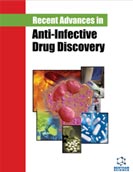Abstract
Adolescence, a transitional phase from childhood to adulthood, is marked by
several critical changes in the human body, whether emotional, physical,
psychological, or social. This sensitive phase, which primarily lasts from 10-19 years
of age, lays the trajectory for overall development and health among adults.
Neurobiological, environmental, genetic aspects, lifestyle, and behavioral factors, such
as eating disorders, substance abuse, social media, physical inactivity, sex-related
differences, etc., can lead to disease onset, with anxiety and depression being the
prominent ones. Besides, the adolescent brain is structurally different from the adult
brain, with varying levels of hormones and neurotransmitters, making it more
vulnerable to changes. Prevention, prompt diagnosis, and treatment are vital to
improving adolescent mental health. Preventive interventions and mental well-being
awareness are paramount to alleviating health loss. This chapter will mainly focus on
the molecular basis of the adolescent brain, causes and symptoms of anxiety and
depression, neuropsychiatric overview, appropriate measures for prevention, timely
diagnosis, intervention, and treatment, and the role of society in shaping the adolescent
brain.






















